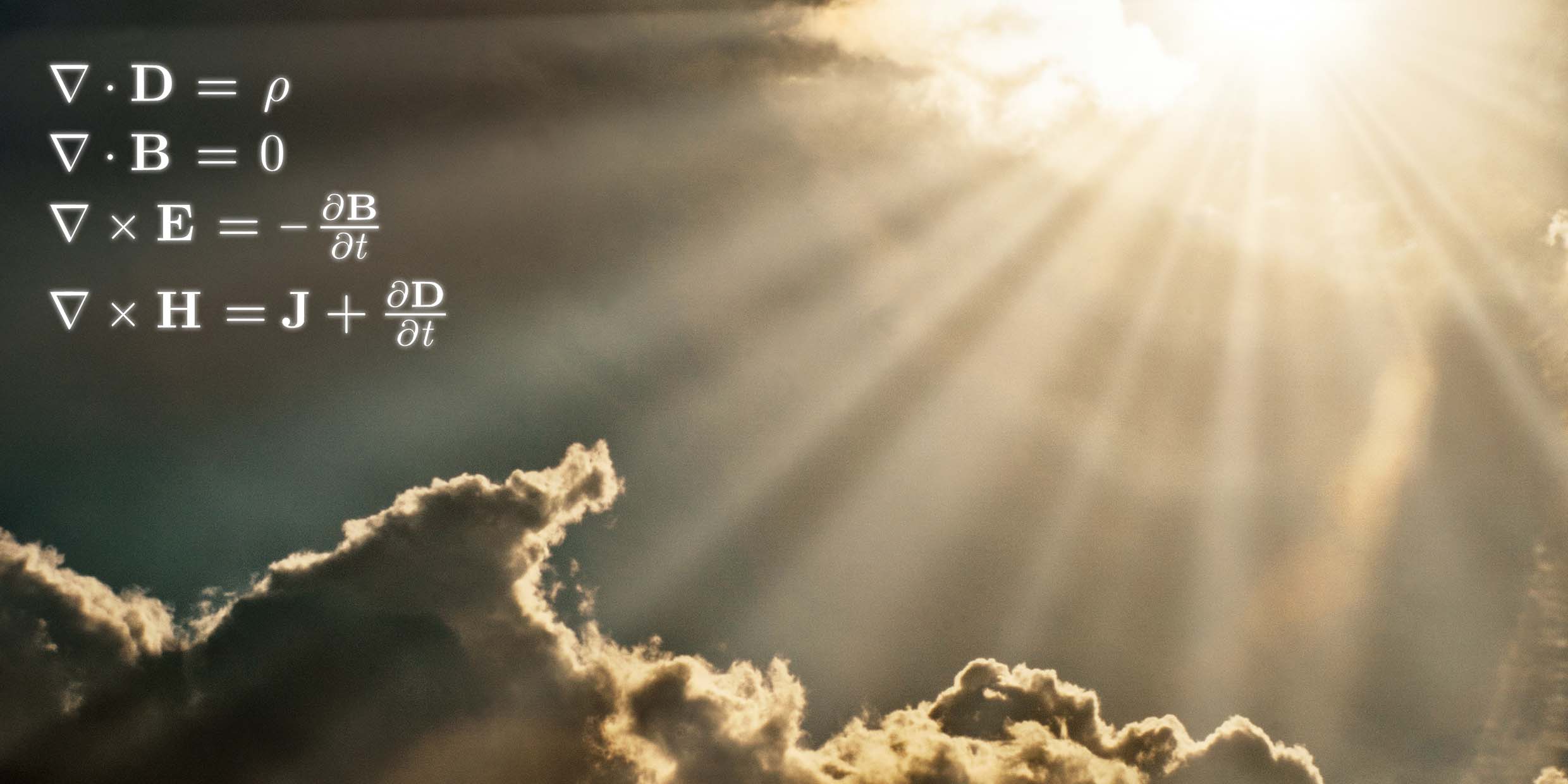Originally published 22 February 1999
“Beauty is truth, truth beauty,” wrote John Keats.
His famous dictum has become something of a cliche, but it beautifully expresses a truth, and it certainly resonates with scientists — particularly physicists.
Several months ago I received from Harvard University Press an advance review copy of Professor Gerald Holton’s book, The Advancement of Science and Its Burdens.
Then, a few weeks later, along came another copy. A single misprint had been corrected. The book had been reprinted, or the flawed page reprinted and the book rebound. In any case, the author or publisher thought the typo was significant enough to go to a lot of trouble.
And what was this momentous boo-boo?
A plus sign in a mathematical equation had been misprinted as a minus.
How can a smidgen of ink the size of this letter “i” make such a difference?
The offending sign was in one of four mathematical equations that summarize and unify the theories of electricity and magnetism. The equations are the invention of the 19th century physicist James Clerk Maxwell, and they are universally known as Maxwell’s equations.
In the 1860s, Maxwell looked back over a century of electric and magnetic experiments by people such as Faraday, Ampère, and Coulomb. He saw that their discoveries embodied deep symmetries, which he made obvious in his beautiful equations.
And when he combined his equations, out popped an electromagnetic theory of light. Until then, no one had dreamed that light had anything to do with electricity and magnetism.
Maxwell’s achievement represents one of the great unifying moments in physics. Even today, his equations are considered so beautiful that you will frequently see them on T‑shirts worn by science undergraduates.
The message of the T‑shirts is this: Beauty is truth, truth beauty. And that’s something of the point Holton was making in his book, and the reason why the difference between a plus and minus can make a difference. It’s as if one took the corner of Mona Lisa’s mouth and gave it a slight turn up or down.
The beauty of Maxwell’s equations is — for a physicist — a warranty of their truth, irrespective of the many ways they have been confirmed experimentally. When Einstein proposed his General Theory of Relativity, physicists knew immediately they were in the presence of truth, even though — initially — not a single experiment confirmed the theory. The mathematics of relativity was just too beautiful not to express reality. Of course, Einstein’s theory has now been amply verified by observations.
In his new book, Hunting for Hope, writer Scott Russell Sanders offers the experience of beauty as one reason why we can still be hopeful in a world fraught with human tragedy and environmental cataclysm. He begins his chapter on beauty with an account of his daughter’s wedding — the beauty of the church, the dresses, the music, and, especially, of his daughter Eva.
And then he wanders into science. He talks about the sort of beauty that is expressed by Maxwell’s equations, which physicists trace back with their theories to the symmetrical energy of the Big Bang.
He writes: “Without being able to check their equations, I think the physicists are right. I believe the energy they speak of is holy, by which I mean it is the closest we can come with our instruments to measuring the strength of God. I also believe this primal energy continues to feed us, directly through the goods of Creation, and indirectly through the experience of beauty.”
The call of an owl, a photograph of a galaxy, an arrowhead placed in his hand by a child, the smile of his daughter through her wedding veil: In these experiences the writer senses a harmony between himself and the thing he beholds, a sympathetic vibration between inside and outside. The name for this resonance, he says, is beauty.
Sanders is a humanist — he teaches in the English Department at Indiana University — but his understanding of beauty is similar to that of the physicist. Beauty gives us a glimpse of the underlying order of things, he says: “The swirl of a galaxy and the swirl of a gown resemble one another not merely by accident, but because they follow the grain of the universe.”
The grain of the universe! This is what Maxwell expressed with his beautiful equations: something about the grain of the universe. This is what Newton, Darwin, and Einstein beheld when they found simple and elegant ways to express complex realities.
Beauty is the resonance of a pattern of flickering neurons in the brain with patterns of order in the world. And that is why beauty is nature’s signature of truth.
“Beauty feeds us from the same source that created us,” writes Sanders. “It reminds us of the shaping power that reaches through the flower stem and through our own hands. It restores our faith in the generosity of nature.”



